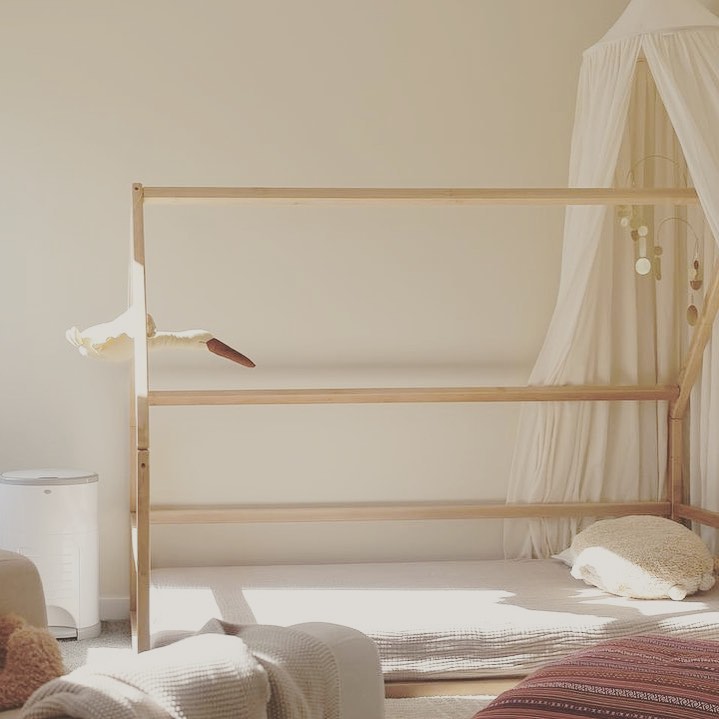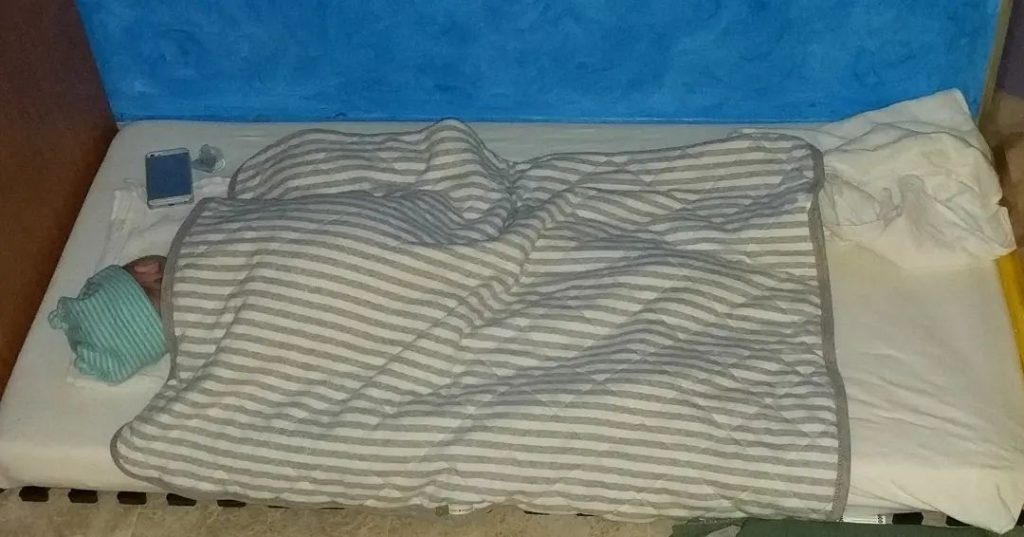As parents, we want to create the best possible environment for our children’s growth and development. The Montessori approach to child-rearing has gained popularity in recent years. It focus on promoting independence, exploration, and healthy sleep habits in young children. One key aspect of this approach is the use of a Montessori floor bed. This a low, platform-style bed that sits directly on the floor. In this blog post, I will explore the benefits of the floor bed. You’ll learn how to get started with one and what to keep in mind as you implement this child-rearing approach in your home. Whether you are a seasoned Montessori parent or just getting started, I hope this post will provide valuable insights into the Montessori floor bed and its role in promoting your child’s healthy development.
WHAT IS THE MONTESSORI FLOOR BED EXACTLY?
First and foremost, it is important to understand what a Montessori floor bed is. Simply put, it is a low, platform-style bed that sits directly on the floor, with no rails or barriers. This design allows the child to move freely in and out of bed, promoting independence and self-motivated learning.

Pro tip: if you place some easily accessible objects close to the floor bed, there is a good chance that you might get a few minutes lie-in. After waking up, your baby might just look around. Seeing the tempting toys, he might go to play with those instead of waking you up. The Crochet Teething Ring, the Montessori Puzzle Ball or the Fabric Sensory Ball are all safe, visually appealing materials that are perfect for this job.
This obviously only works if your little one can crawl and has gotten used to sleeping in a floor bed. I also feel the need to be honest with you here. While this might sound lovely, we never really got those few minutes extra sleep time. Even though my own baby did not call us straight away, he still started to chat and sing to his toys, which we heard through the baby monitor, of course. It was still a much nicer wake up call than crying!
WHAT ARE ITS BENEFITS?
One of the key benefits of the Montessori floor bed is that it encourages movement and exploration. Infants and toddlers are free to crawl in and out of bed at will, which helps to develop their gross motor skills and spatial awareness. This also allows them to engage in self-directed play and exploration, which is an important aspect of the Montessori approach. Read more about the relevant Montessori philosophy for babies in this post.
Another benefit is that it promotes healthy sleep habits. Because the child is able to move freely in and out of bed, they are more likely to develop a healthy sleep routine. This can lead to better sleep quality, which in turn can have a positive impact on overall health and wellbeing.
In addition to promoting independence and healthy sleep habits, the Montessori floor bed also fosters a sense of security and comfort. Because the bed is low to the ground and has no barriers, the child is able to see and interact with their surroundings more easily. This can help to reduce anxiety and promote a sense of safety and security.
Not to mention that it can be a more cost-effective and environmentally-friendly option than a traditional crib. Because the bed sits directly on the floor, there is no need for a separate mattress or crib frame. This can save money and reduce waste.

WHAT YOU NEED TO KNOW BEFORE GETTING A FLOOR BED?
Are you considering starting with a Montessori floor bed for your child? There are a few things you should be aware of to ensure a safe and successful transition. Here are some tips:
- The ideal age to start using a floor bed is when your child is around 6-8 months old and can move around on their own. However, every child is different. That’s why so it’s important to watch for signs of readiness and make the transition when your child is ready. We personally started when our baby was four months old.
- Make sure the room where the floor bed will be located is safe for your child to move around in. Remove any hazards or breakable objects, and ensure that you baby-proof the room.
- The mattress should be firm and fit snugly in the bed frame. This will help prevent the mattress from shifting and keep your child safe while sleeping. We used a simple IKEA crib mat without a frame and it worked for us. You might want to invest in a frame, too.
- Initially, it’s a good idea to start with short naps during the day on the Montessori floor bed. This way your child can get used to the new sleeping arrangement.
- Like any change, it may take some time for your child to adjust to the new sleeping arrangement. Be patient and supportive, and your child will eventually get used to the floor bed.
By following these tips, you can ensure a safe and successful transition to a Montessori floor bed and help promote your child’s independence and healthy development.
FINAL THOUGHTS
The Montessori floor bed is a simple yet effective tool that can have a profound impact on your child’s development. By promoting independence, exploration, healthy sleep habits, and a sense of security, the Montessori floor bed can help your child thrive and grow in a safe and nurturing environment. As you implement the Montessori approach in your home, it’s important to remember that every child is different. It may take time for your child to adjust to the new sleeping arrangement. But with patience, support, and a commitment to your child’s wellbeing, the Montessori floor bed can be a valuable addition to your child-rearing toolkit. I hope this post has provided useful insights and information on the benefits of the Montessori floor bed.
If you’re interested in how a Montessori baby space looks like, read this post.
